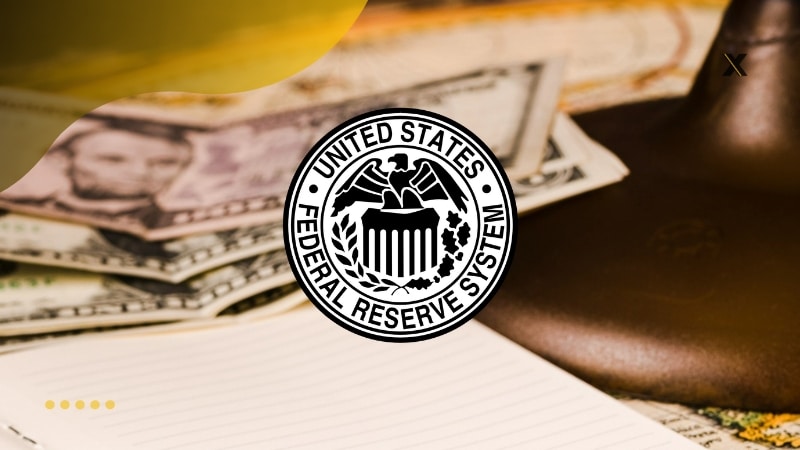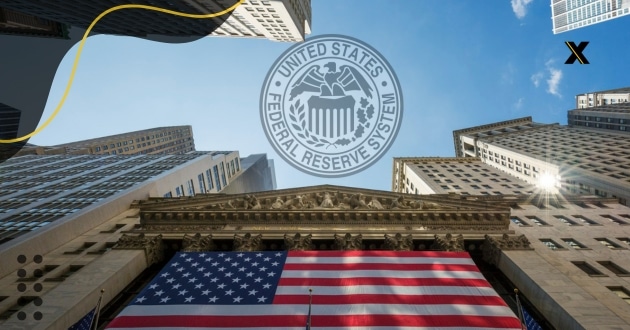Anúncios
Federal reserve economic policies are key to understanding the global economic impact. It is important to know that the decisions of the Federal Reserve (Fed) do not only affect the United States, but reverberate in markets and economies around the world.
Today we will address all the instruments used by the Federal Reserve in mind. Our goal is for you to understand how these policies influence the global economy, the mechanisms used by the Fed, and how these decisions directly affect financial markets.
So, if you want to know everything about Federal Reserve economic policies, understanding how the Fed shapes the global economy and the importance of tracking its actions for companies, investors and governments, you are in the right place. Let’s go!
Why follow the Federal Reserve’s economic policies?

The Federal Reserve’s (Fed) decisions don’t just affect the U.S. economy, they reverberate across global markets.
The reason for this is the fact that it is the country of the dollar, the most used currency in transactions and reserves around the world. The Fed exerts an influence that transcends borders.
To give you an idea, when the Fed raises interest rates, US Treasury bonds become more attractive to global investors. Who start to seek safety and yield in US assets. Because of this, there is a decrease in the money invested in emerging countries, such as Brazil, Mexico and Turkey.
Anúncios
Furthermore, when the Fed reduces interest rates or injects liquidity through policies such as quantitative easing, the scenario is the opposite. Thus, there is an appreciation of assets in emerging markets and a reduction in external financing costs.
In addition, the Fed’s decisions influence the prices of commodities such as oil and gold, and impact the cost of foreign debt for many countries.
Therefore, following the Fed’s movements is a necessity for governments, companies and investors.
The Fed’s main instruments

To implement its monetary policies and ensure the stability of the American economy, the Federal Reserve has a series of economic instruments capable of directly influencing the liquidity of the financial system and the behavior of credit.
Among the main mechanisms used by the U.S. central bank, three traditional tools stand out:
1. Federal Funds Rate
The Federal Funds Rate is the interest rate used in short-term loan operations. In fact, this is the most well-known and widely used instrument by the Fed.
Changes in this rate represent a direct way to change economic activity.
It works like this, an increase in the rate makes credit more expensive, discouraging consumption and investment. Which contributes to containing inflation. The reduction of the rate, on the other hand, makes credit cheaper, stimulating economic activity.
2. Open Market Operations (Federal reserve economic policies)
These basically consist of the purchase and sale of United States Treasury securities by the Fed in the secondary market.
When the monetary authority buys bonds, it injects liquidity into the economy, promoting an expansionary policy. On the other hand, the sale of these securities takes money out of circulation.
In short, this tool is used as a way to keep the Federal Funds Rate within the average value established by the Federal Open Market Committee – FOMC.
3. Bank Reserve Requirements
This refers to the requirement that banks keep a minimum percentage of their deposits in reserve, and cannot use it to grant credit.
By changing this percentage, the Fed directly affects the amounts available for lending.
In recent years, the Federal Reserve has shifted to quantitative easing and forward guidance, which have proven critical during periods of economic difficulty.
4. Interest rate policy and fight against inflation (Federal reserve economic policies)
Interest rate policy is the Federal Reserve’s main tool in controlling inflation.
By adjusting the Federal Funds Rate, the US central bank changes the basic interest rate of the entire economy. Directly affecting the cost of credit, investment decisions and the consumption behavior of the population.
When inflation rises and threatens to exceed the price stability target (currently set at around 2% per year), the Fed adopts a contractionary monetary stance. I
Thus, it increases interest rates to contain consumption, discourage indebtedness and, thus, reduce inflationary pressure.
On the other hand, when inflation is below ideal, the central bank reduces interest rates to boost consumption, stimulate investments and promote the resumption of growth.
5. Quantitative Tightening (QT)
Quantitative Tightening (QT) is a monetary policy tool used by the Federal Reserve to shrink the size of its balance sheet. This is achieved either by actively selling U.S. Treasury securities and mortgage-backed securities (MBS), or by simply allowing these assets to mature without reinvesting the proceeds.
QT represents a reversal from Quantitative Easing (QE), the expansionary policy used extensively after the 2008 financial crisis, in which the Fed purchased large volumes of securities to inject liquidity into the economy. In contrast, Quantitative Tightening aims to drain excess liquidity, curb inflationary pressures, and restore more neutral financial conditions.
Beginning in 2022, the Federal Reserve adopted QT more aggressively in response to persistent inflation and an overheated economy. The process has been gradual, allowing markets to adjust and minimizing disruptions.
Conclusion (Federal reserve economic policies)
Understanding the Federal Reserve’s (Fed) economic policies is crucial for any investor. The reason for this is that the decisions made by the Fed impact the whole world.
There are several tools used, which help control the interest rate, consumption of the population. Attraction of investment to the country, among other factors.
For investors, staying informed about the Fed’s policies is indispensable in deciding how and where to invest.
In summary, closely monitoring the Federal Reserve’s actions provides essential insights into the economy and allows individuals and institutions to adjust their strategies appropriately to protect and grow their financial interests.
Another factor that directly impacts the U.S. economy is the real estate market. With that in mind, we recommend that you find out how the real estate economy impact your investments, both generating profit and loss.




